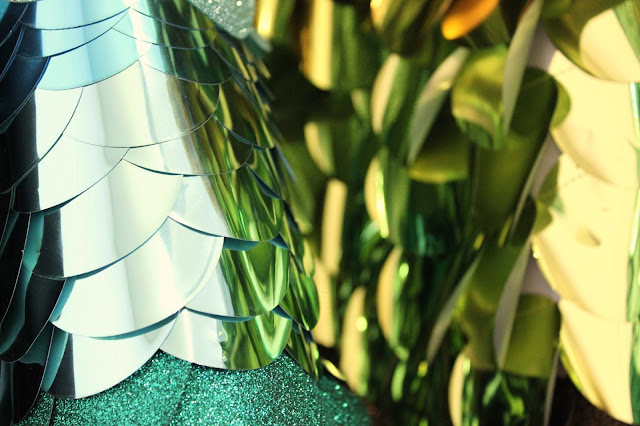Erika Doy's graduate collection for Grays School of Art was a vivid shield of scales in a mixture of fabrics which are both reflective and absorptive of light, like giant sequins.
"For this project I have been looking at bio:mimicry which is the study of models, systems and elements of nature for the purpose of solving design problems. I have always been greatly inspired by nature and all its beautiful forms, from giant systems to the tiniest details on a butterfly wing underneath a microscope. I wanted to create a kind of textile that was new in terms of the material used. Part of me always likes to try and use materials in a different way than what they are meant to be used for." Erika Doy



















































